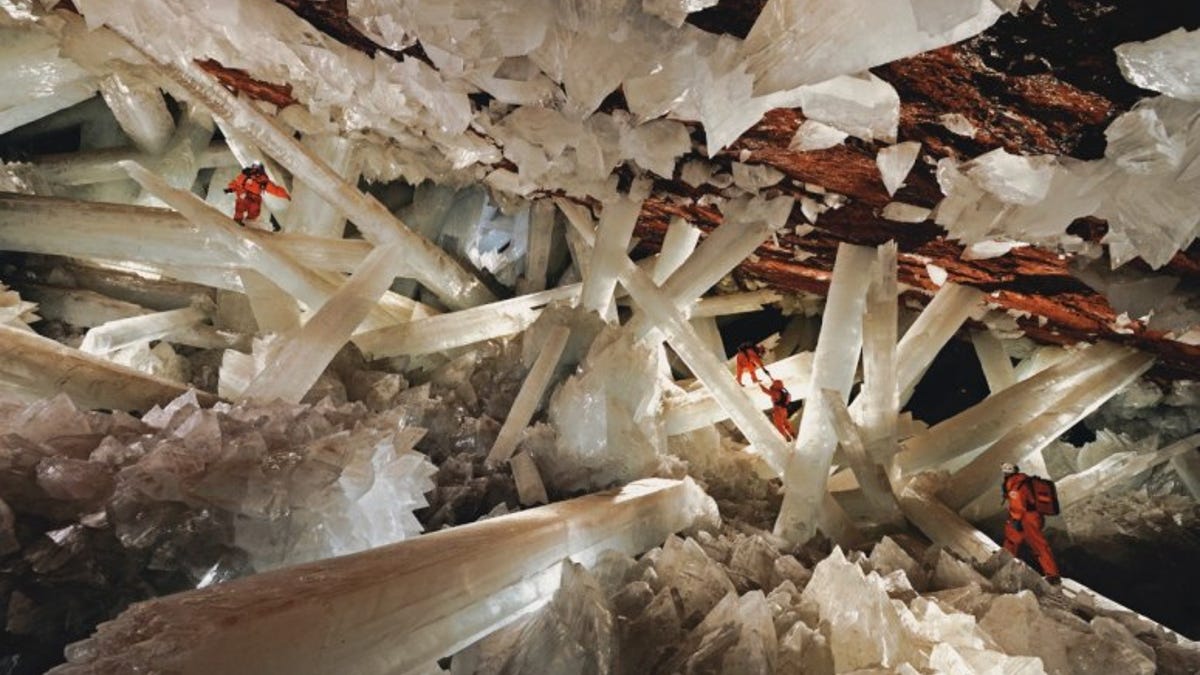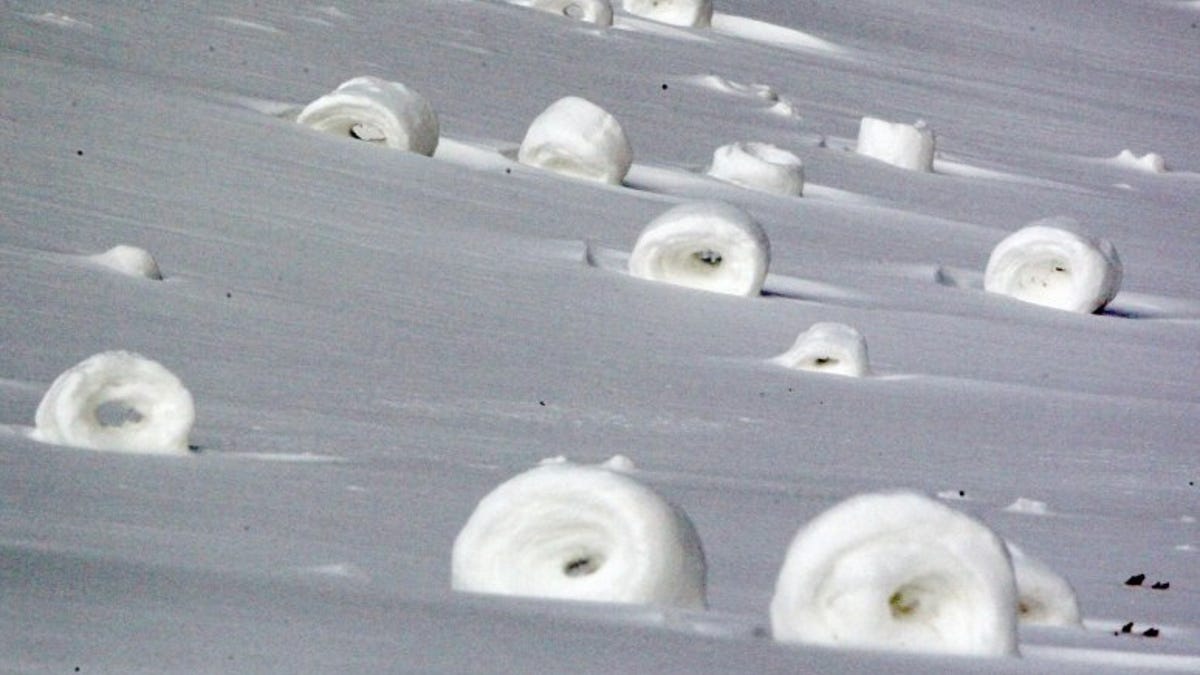From Mexico’s Cave of Crystals to waves frozen in time, these natural formations will make you look twice.
1. The Cave of Crystals

(Conde Nast/Newscom)
Mexico
Mother Nature hid the largest crystals in the world nearly 1,000 feet below Naica Mountain, in the northwest region of Chihuahua, Mexico. The hidden caves were drained in 1975 but miners only unearthed these milky-white selenite crystals—spires of gypsum as long as flagpoles—in 2000. Though they may look icy, the mega crystals are forged in extreme heat, up to 122 degrees Fahrenheit and were developed in mineral-rich water over a period of 500,000 years. Researchers can only enter the cave for short periods of time, and there are plans to re-flood it to preserve the crystals.
2. The Wave

(Conde Nast/Newscom)
Utah and Arizona
This awe-inspiring rock wave in shades of ochre and crimson unfolds through the Paria Canyon–Vermilion Cliffs Wilderness on the border of Utah and Arizona. First water, then wind eroded the Navajo sandstone, revealing layers of sand that blew through the area during the Jurassic period. Access to “the wave” is heavily restricted; the Bureau of Land Management hands out only 20 permits to the Coyote Buttes region a day.
3. Fingal's Cave

(Conde Nast/GMS Photography)
Scotland
Reminiscent of Giant’s Causeway in Northern Ireland, and just across the sea in Scotland’s Inner Hebrides, Fingal’s Cave on the island of Staffa boasts the same hexagonal basalt columns, but houses them in a cathedral-like sea cave with shimmering turquoise water. Not convinced Fingal’s Cave is superior? German composer Mendelssohn wrote an overture inspired by the acoustics he heard on his visit.
4. Wave Rock

(Nigel Killeen)
Australia
Like a 46-foot-high cresting wave that’s never going to break, this odd rock formation in Hyden Wildlife Park is a popular photo stop on trips to western Australia. (Travelers tend to assume the surfer pose for pictures.) The wave was formed by the erosion of softer material at the bottom of the ancient granite dome, and the vertical stripes are the result of rain washing chemicals down its face.
5. Snow Rollers

(Conde Nast/Newscom)
USA
Like a cross between tumbleweed, a hay bale and a doughnut, this natural phenomenon is rarely witnessed; it requires very specific snow conditions and wind speed. But when all the boxes are ticked, as they were this January in Ohio (pictured), the wind rolls an ever-growing snowball and then blows out its middle, creating this bizarre sight.
See more weird natural wonders at Conde Nast Traveler
More from Conde Nast Traveler
Crazy Restaurants in Extreme Locations
Why Does Airline Food taste So Bad? The Answer Might Surprise You
